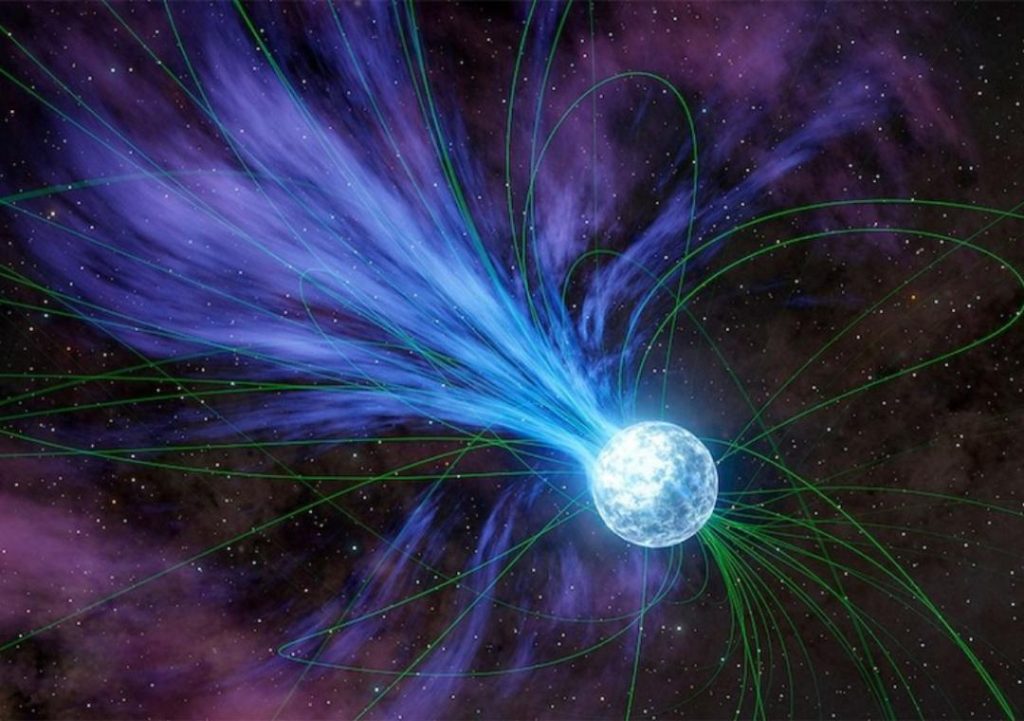
Title: Gold & Platinum Created through Neutron Stars’ Explosions: Study
The origin of precious metals like gold and platinum has long been a topic of fascination for scientists and treasure hunters alike. For centuries, humans have been mesmerized by the allure of these shiny, coveted metals, wondering where they came from and how they were formed. Now, a groundbreaking study led by Columbia University student Anirudh Patel has shed new light on the creation of these valuable elements. According to the study, magnetars, or highly magnetized neutron stars, played a crucial role in the formation of gold and platinum in a cosmic event that occurred over 20 years ago.
Neutron stars are incredibly dense celestial bodies that are formed when massive stars collapse under their own gravity. These stars are so dense that a sugar-cube-sized amount of their material would have a mass of about a billion tons. Magnetars, specifically, are a type of neutron star that has an extremely strong magnetic field. This field is so powerful that it can be thousands of times stronger than the Earth’s magnetic field.
The study, which was published in The Astrophysical Journal, suggests that magnetars exploded and released flares that contained gold and platinum. These flares were so powerful that they could be seen from millions of light-years away. The explosions happen approximately once per decade in the Milky Way and annually across the observable universe.
The research team used data from NASA’s Fermi Gamma-Ray Space Telescope to study the explosion. They analyzed the light emitted by the flare and found that it contained a unique signature of gold and platinum. The team was able to identify the presence of these elements by looking at the characteristic radiation patterns produced by their decay.
“We were able to detect the signature of gold and platinum in the flare,” said Dr. Patel, the lead author of the study. “This was a major breakthrough, as it allowed us to confirm that magnetars are indeed responsible for creating these elements.”
The study’s findings have significant implications for our understanding of the origin of precious metals. For centuries, scientists have been trying to figure out how gold and platinum were formed. Some theories suggested that they were formed through the collision of two neutron stars, while others proposed that they were created in the hearts of supernovae.
However, the study’s findings suggest that magnetars are the primary source of these elements. The explosions caused by these magnetars are so powerful that they can create the necessary conditions for the formation of gold and platinum.
The discovery of magnetars’ role in the creation of precious metals has also shed new light on the universe’s ancient history. The explosions caused by these magnetars could have played a crucial role in shaping the universe as we know it today.
“The discovery of magnetars’ role in creating gold and platinum opens up new avenues for understanding the universe’s ancient history,” said Dr. Patel. “It’s a reminder that the universe is full of mysteries waiting to be uncovered, and that even the most unexpected discoveries can have significant implications for our understanding of the cosmos.”
The study’s findings have also sparked new interest in the search for magnetars. Astronomers are now working to identify more of these celestial bodies, which could potentially reveal new secrets about the universe’s formation and evolution.
The discovery of magnetars’ role in creating gold and platinum is a testament to the incredible complexity and beauty of the universe. It’s a reminder that even the most seemingly mundane objects, like precious metals, have a rich and fascinating history that is still waiting to be uncovered.
In conclusion, the study led by Columbia University student Anirudh Patel has shed new light on the creation of gold and platinum. The findings suggest that magnetars, or highly magnetized neutron stars, played a crucial role in the formation of these valuable elements. The explosions caused by these magnetars could have played a crucial role in shaping the universe as we know it today. As scientists continue to study these celestial bodies, they may uncover new secrets about the universe’s ancient history and the incredible complexity of the cosmos.






